3 Perspectives on Dub Camp 2023
As a research project focused on popular music and culture it is our duty to reach out to the scene where this is, being it a small street dance or a massive international festival. The latter was the case when SST France team members Dr Jean-Christophe Sevin and Maria Emilia Escamilla travelled to Dub Camp festival last year. The two main objectives of this short trip were gathering interest for the Sonic Map project by bringing it into the offline world and backing the ongoing French research by taking part into the most iconic French (and European, if not global) sound system gathering. By chance, Dr Brian D’Aquino was also there as performing artist with his Bababoom Hi Fi sound system, which testifies to the practice-as-research approach of the project. What follows is a six-handed write up account of the festival from three team members from different backgrounds.
1_Music to foster social change (Maria Emilia Escamilla Eguiluz, Mexico)
Dubcamp festival in Nantes, France, is a long anticipated date for the sound system community in Europe and beyond. “It is our light day” as NOFA Sound System stated during the final race of the Boxman Challenge – an obstacle race where a couple of boxpeople must get a heavy box of equipment to the finish line in the shortest time possible. The SST France team reached the festival site on July the 12th. Our task was to present the SST Sonic Map and share the ongoing work with the community. First day – the setup day – was in fact quite a delightful experience. It was all about setting up, meeting the neighbors, making new encounters, and finding out the unexpected connections between the community. During the next four days, I witness how the relationships between Mexican and French passionate fellows got stronger. In this sense, it was an honor to witness how the passion for music connects people an ocean apart and encourages social change. At the end of the first evening, we gathered around Blackboard Jungle sound for a soulful and familiar gathering.
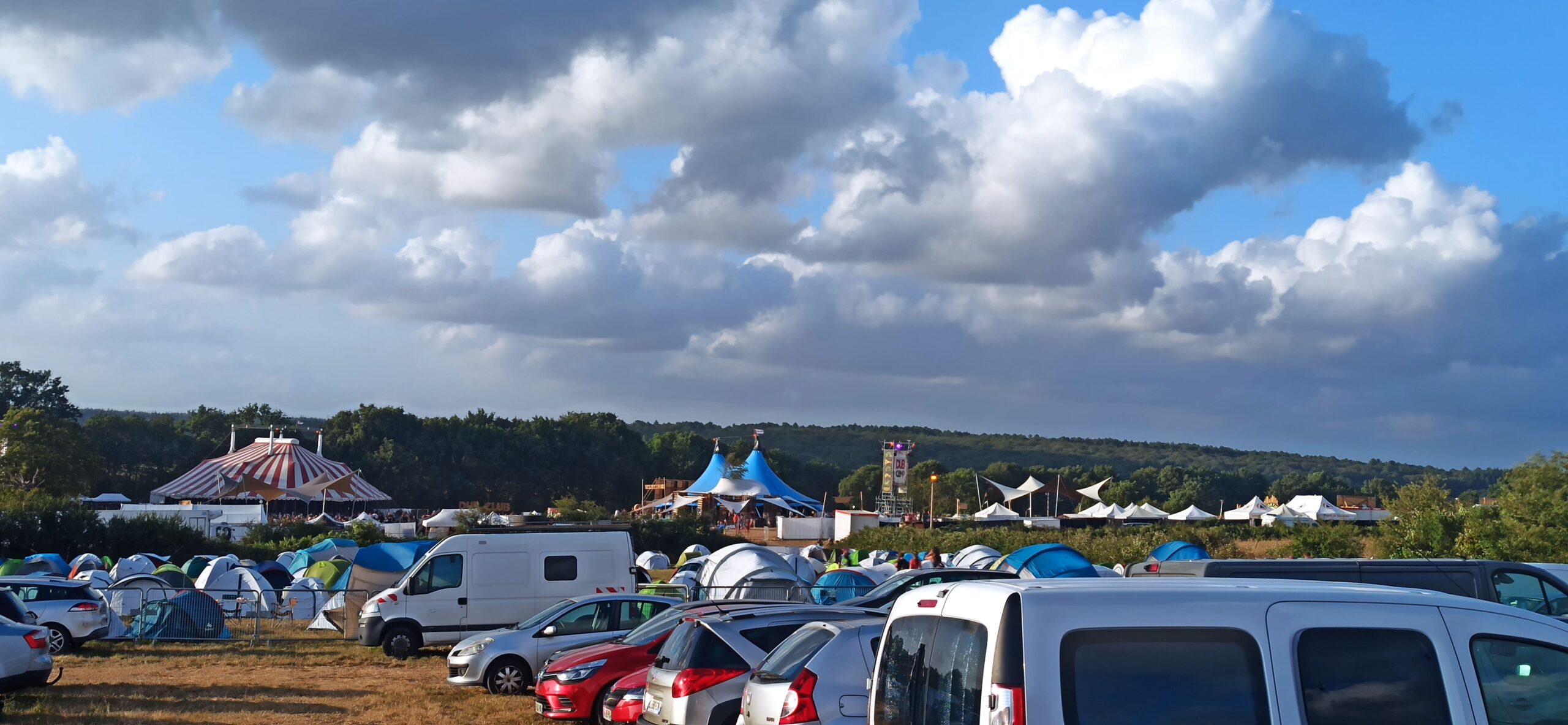
View of the festival from the parking lot
It was not until the next day that Dub Camp revealed its magnitude to me. The ephemeral village was up and running, and an estimated flood of 9,000 people started to move across the five main stages for the next four days. The SST stand was located at the Jamaican Street between the body painting stall and the record store. Exactly where the academy should be, if access to shared knowledge is considered a priority. Considering the size of the festival, its several stages and multiple attractions, SST had a modest but very well-tuned performance. Most of the attendees were sound systems owners and fans. Even performers from the line up stepped in showing interest and respect for the project’s work.
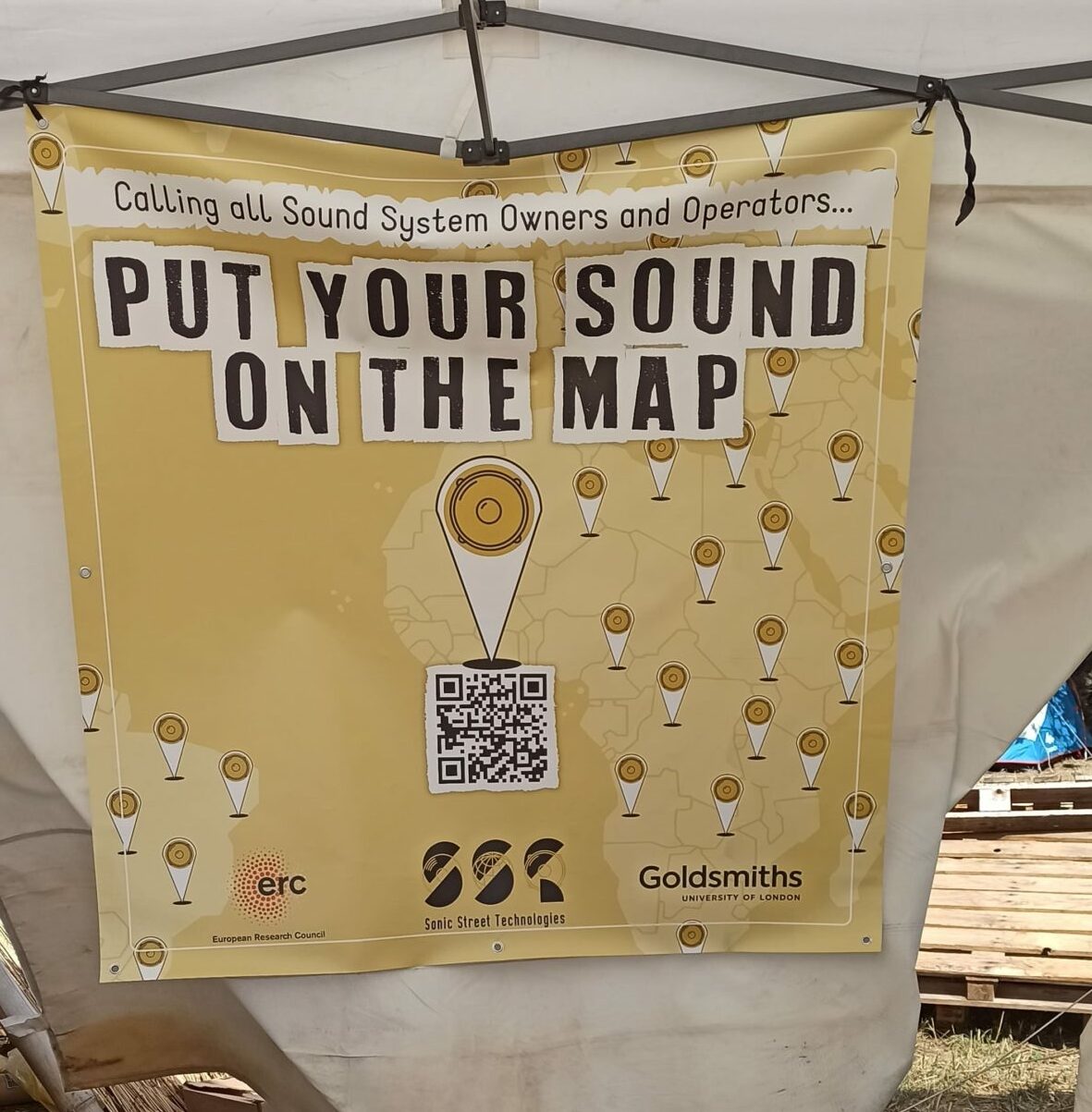
Setting up the Sonic Map stall at Dub Camp
When it comes to music, the amplitude of the festival’s musical range blew my mind. Dub Camp showed me the wide spectrum of possibilities ranging from orthodox roots reggae to dub-techno. The festival offered music for every mood and state of mind, and I reaffirmed my own: anything that goes chill and soulful. No surprise you could easily find me at the chill corner. My personal musical journey started with the instrumental Blackboard Dub Symphony of the first night. It also included the eight hours sound meeting between Bababoom Hi Fi, Jah Roots and I-Skankers the next day. Finally, the one and only one, the almighty Zion Gate with its three-day performance. Plus, I got the opportunity to make discoveries such as Bass Foundation Roots from New Delhi, Feminine Hi Fi from Sao Paulo, other mindful activities such as Sir James’ lectures, and the joyful boxman challenge – where women didn’t stubborn for these “men” jobs.
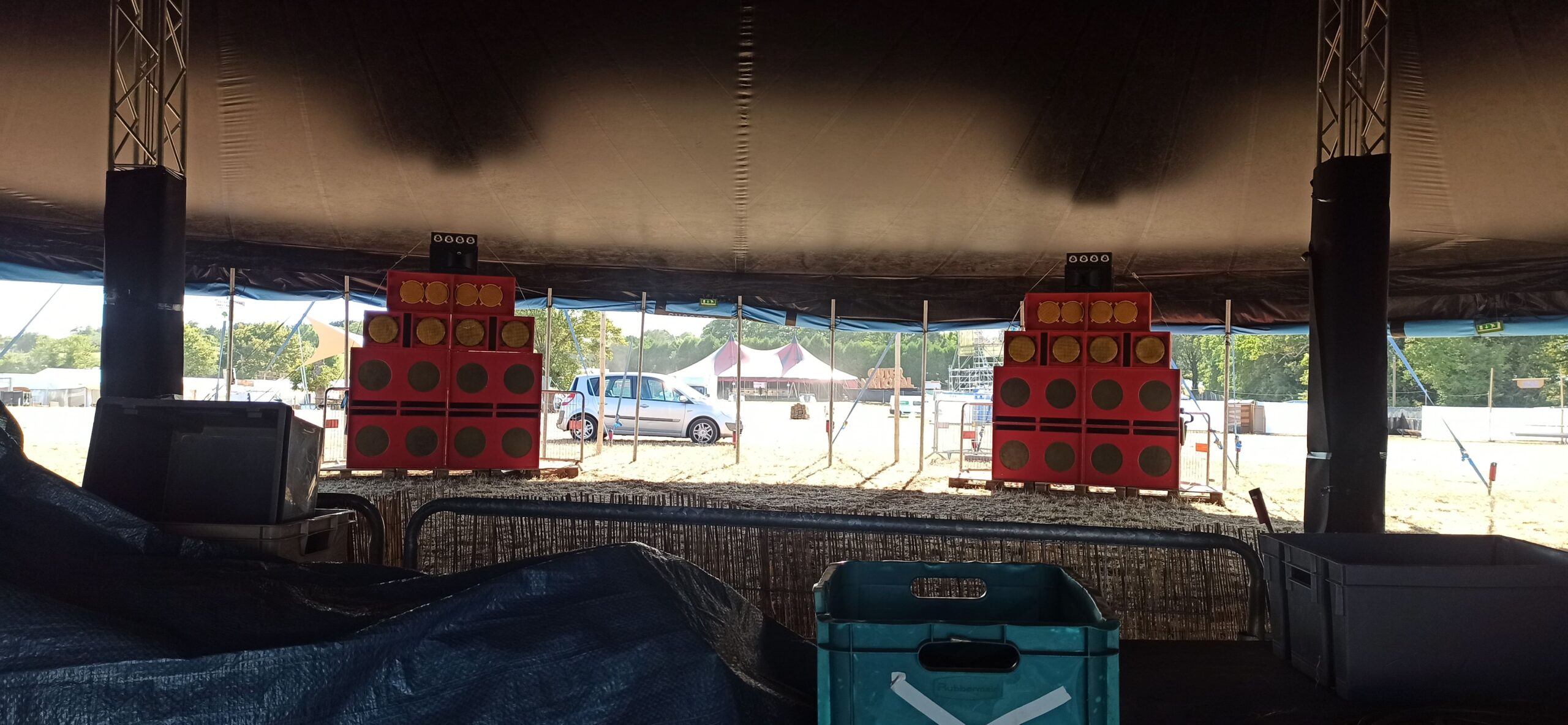
Zion Gate Hi Fi setting up
Beyond music, what really attracted my attention was the level of commitment and responsibility of the organizers and everyone who was involved at the management level. Because Dub Camp is not limited to being a music experience, it also aims to create a safe space for all. Safe for attendees, volunteers, women, neighbors, kids, and for the environment. It was quite impressive to see how a small group of enthusiasts (Get Up Association from Nantes) was able to set up such a massive and influential event. From the integration with the residents’ community, neighbors, and local suppliers, to the enormous quantity of volunteers (around 950 people), collabs, and a stunning figure of 96% of self-funding. Participating associations covered areas such as risk reduction related to drug consumption, sexual assault prevention, paramedics support, and even waste management – which resulted in an amazing 80% of waste recycled. As I discussed with Jean-Christophe on our way back to Marseille, festivals offer more than joy and music: they encourage chande in costumes and new habits. In this sense, a committed and responsible festival like Dub Camp can be a catalyst for social change covering crucial aspects for collective well-being such as health, safety, circular economy, and waste reduction.
2_Creative recombinations of recorded media (Jean-Christophe Sevin, France)
Dub Camp festival is entirely dedicated to sound systems, which sets it apart from other festivals featuring sound system corners, which makes it the major European (and perhaps global) gathering of its kind. This year, 19 sound systems catered for the festival’s five areas, which featured 179 artists and over 35,000 festivalgoers over four days. Nevertheless, the figures say nothing about the diversity of performances and combinations offered in the programming. Over and above the diversity of the reggae-based currents present in the program – right down to the most remote styles of bass music or electro dub – it is this diversity of combinations which I’d like to emphasize, as a manifestation of the vitality of this media-culture.
The use of recorded media is the basic principle of sound system culture. But it does not exclude live instruments. This was the focus of the opening session, with the Blackboard Dub Symphony, a tribute to instrumental reggae. Over the riddims played by Blackboard Jungle’s full sound system (24 bass boxes, or scoops), eight musicians were invited to perform their own version of reggae anthems, spanning from the 1960s to the present day. Musicians included Guru Pope on saxophone, Valentin Arnaud on trumpet, William Tison on trombone, Ju Youthie on flute, Far East on melodica, Aurel Cade on percussion, Ras Divarius on violin, and Maxime Quennesson aka IStep on cello. In some ways this was a brave choice by Blackboard Jungle, an emblematic duo of the French sound system scene. But Nico and MC Oliva’s faces quickly relaxed, as the audience gave them an enthusiastic welcome. Players of instruments were also regularly featured in combination with selectas, in more improvised forms of intervention or intermittent jam sessions. Wandem Sound System had its own Hornsmen Section (Lix on trombone, Natty on saxophone and Fransax on saxophone, sitar, flute, and ocarina) as one example. Ras Abubakar’s Zion Gate Hi-fi sound system, a pioneer of the French scene, who animated the Uplift Corner, was also backed by musicians, including T-Kay on Hammond organ.
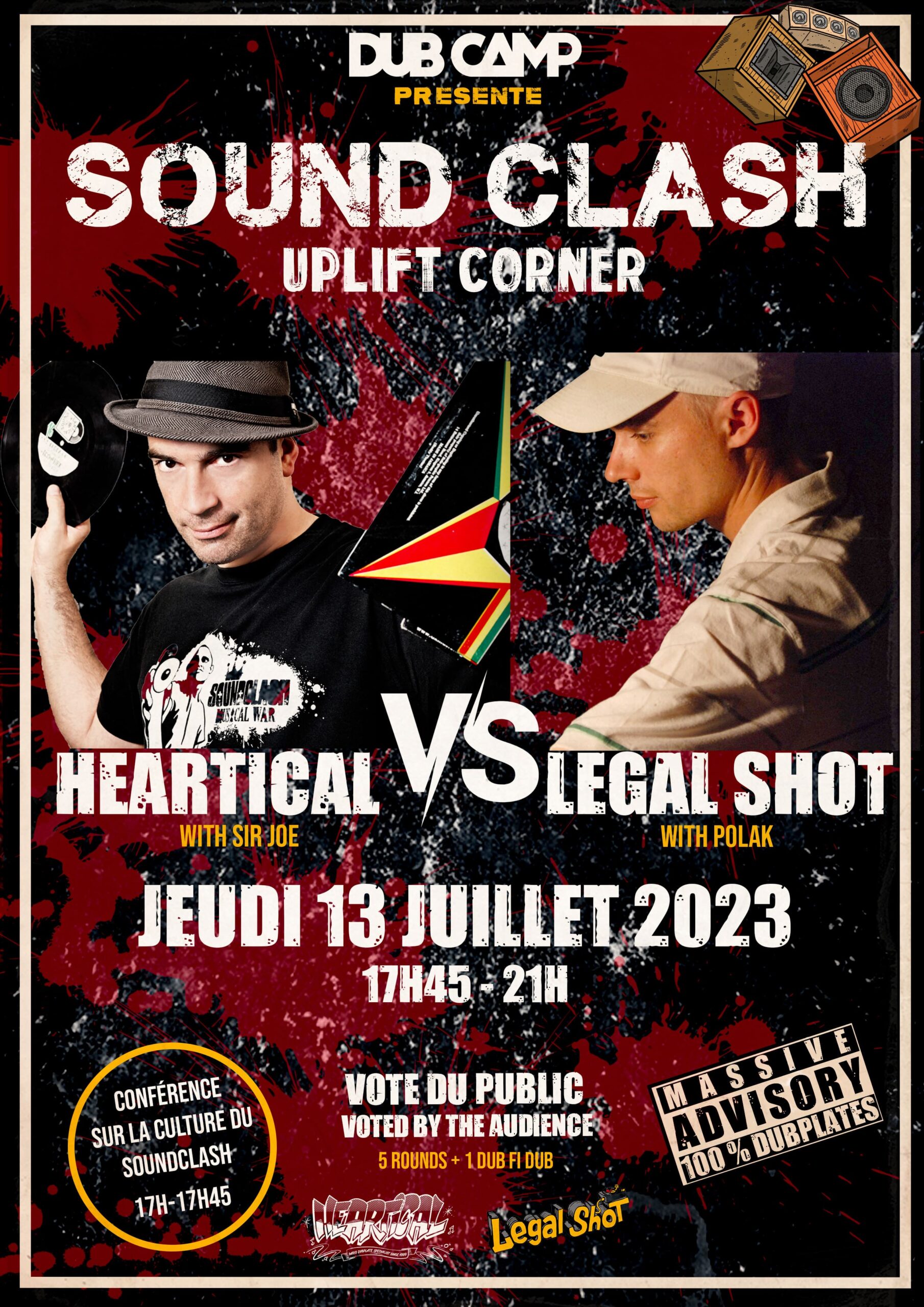
Sound Clash poster
In line with this diversity of combinations, a second key moment was the sound clash. In this occasion, the performance was centered around the recorded medium that is probably the most emblematic of sound system culture: the dubplate. It was the first time that a sound clash had been held at Dub Camp, which suggests a willingness to open and, at the same time, reflects the separation of music worlds apparently distinct and self-related. The sound clash was preceded by a talk led by the two competitors, both major figures of the French sound system scene: Sir Joe Heartical and Polak from Legal Shot sound system. They explained that sound clashes are as old as reggae itself, and that in France the practice was already established in the early 1990s in the ragga scene pioneered by Caribbean sound systems in Paris. They introduced the key terms used in clashes, demonstrating their richness and coherence: for example, the different types of dubplates involved (blueprints, nominatives) to obtain forwards (a way of measuring audience appreciation). The clash was held under the aegis of Sir James Danino, a reggae historian who’s regularly invited to give erudite lectures on various aspects of sound system culture.
The sound clash thus has a dramatic dimension, with each contender disparaging the dubplates his opponent plays. The performance is sustained by a tacit agreement between the competitors and the audience who both know that the confrontation must be treated seriously, and at the same time with a certain sense of humor. For the quality of the clash comes from a momentum of exchanges based on the value of the two competitors, as the winner of the clash pointed out, demonstrating his respect for his rival [1].
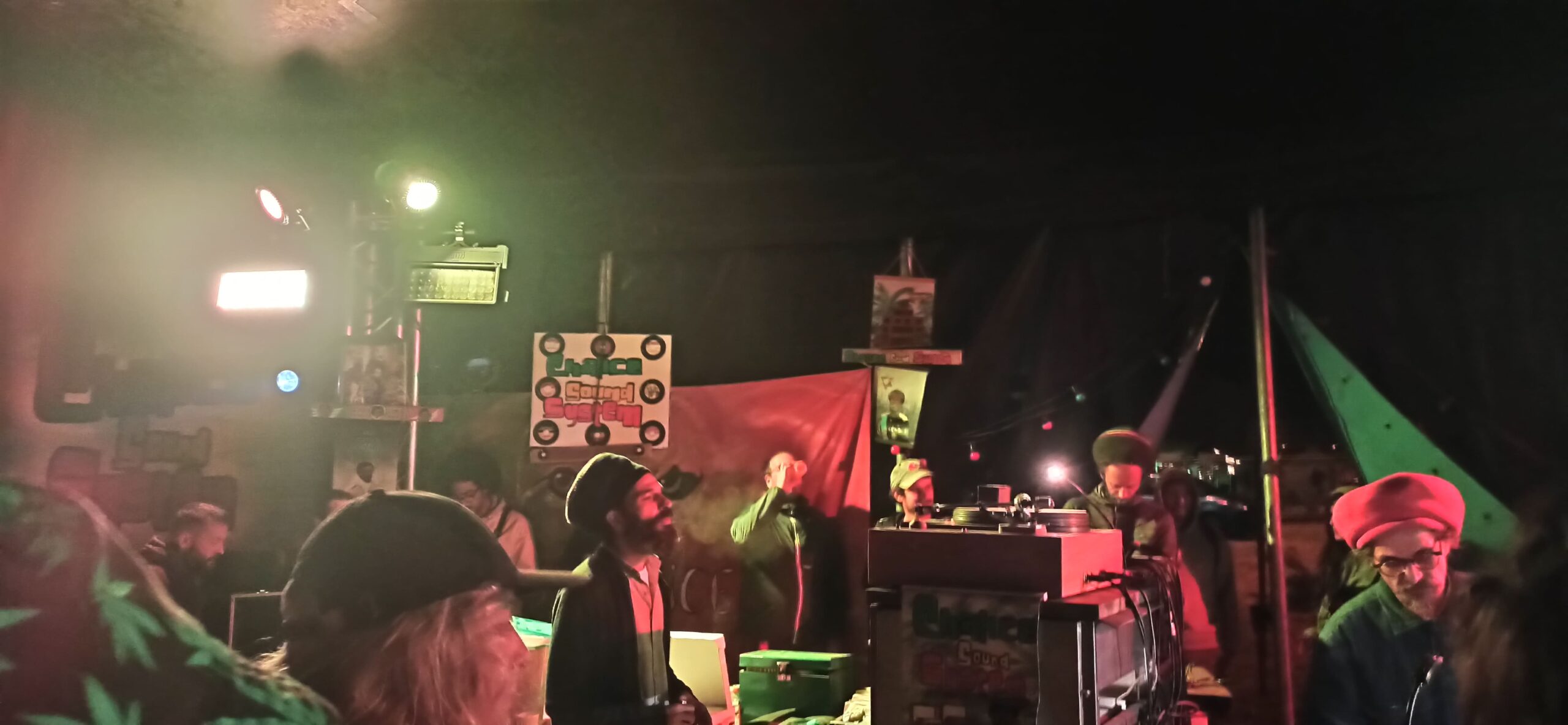
Chalice sound system with valve amps
These vibrant exchanges are also to be found in a combination that is emblematic of Dub Camp: the sound meeting. This consists of three sound systems under a dedicated marquee, the sound meeting arena, playing in turns. The programming team works on matching invitations for sound systems to play together, based on the style of music played or the MCs, for example. On Thursday night, the Brittany-based I-Skankers, the Geneva-based Jah Roots Hi-Fi (feat Alpha Pup) and the Neapolitan Bababoom Hi-Fi got together for a “meeting for roots lovers”, with the three crews sharing a rich vibe and complicity, while on Friday night, the “new generation meeting” brought together in a roaring ambience the Franc-Comtois Wicked Steppas (feat Weedax), Spain’s Watts Attack (feat. Welton Youth) and Indy Boca from Paris (feat. Jacko). Each sound system starts by playing for half an hour and the session ends with one tune each. With the sound meeting the sound system as a music and technological entity takes center stage. One of the principles is in fact to put each unique set under the spotlight so to allow a comparison. It’s also based on a different mode of listening, in that it involves listening to the whole length of a track rather than just a significant part, as is the case with sound clash.
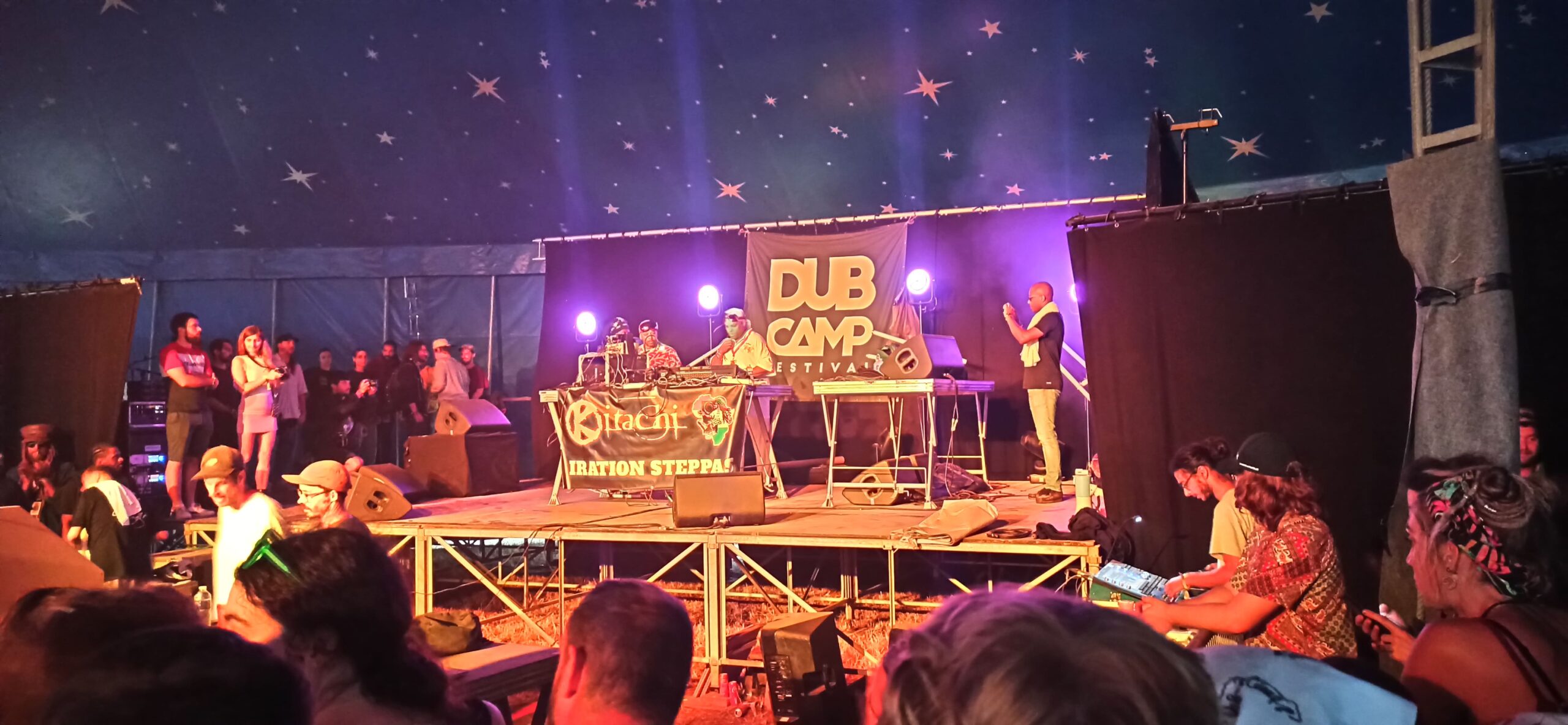
Kitachi live dub on stage
Other combinations were oriented towards celebration or ‘reenactment’, such as the Iration Steppas meets Kitachi session, which saw the veteran Leeds crew – originally composed of Mark Iration, Dennis Rootical and Sammy Dread – reunited for an ‘1990’S style’ session incorporating hip-hop and house influences in a live dub mix performed on multitrack, with live effects and bass guitar. Meanwhile, another live dub mix showcase involved the members of Dub Addict Sound System from Lyon (a cradle of ‘French dub’) and fellow crew Bat Records, celebrating (respectively) the label’s 5th and Dub Addicts’ 20th anniversaries, hosted by Ubik Sound System from Geneva.
3_From Naples to Nantes (Brian D’Aquino, Italy)
Dub Camp is one of the most known and celebrated sound system gatherings, a sort of mandatory pilgrimage for sound system heads from all over Europe and beyond. That’s why I was truly humbled by the invitation – entirely unexpected – from the organizing team, sometimes around January 2023, for Bababoom Hi Fi to play in the Sound Meeting arena.
Besides my academic job I’ve been running a sound system for about two decades now. Bababoom Hi Fi was established in 2004 in my hometown of Naples, Italy, by three friends in their early twenties with a strong drive for revival roots and dub music at a time when it was Jamaican dancehall and new roots really setting the trend. Since then, the sound has been moving forward at a calm but steady pace, slowly progressing with all the due technological updates and changes in the crew one can expect in such a lasting adventure. In 2011 we launched a record label where we could merge the creative drive of a bunch of talented musicians within and around the crew and our own desire to add a more tangible contribution to the scene we felt part of.
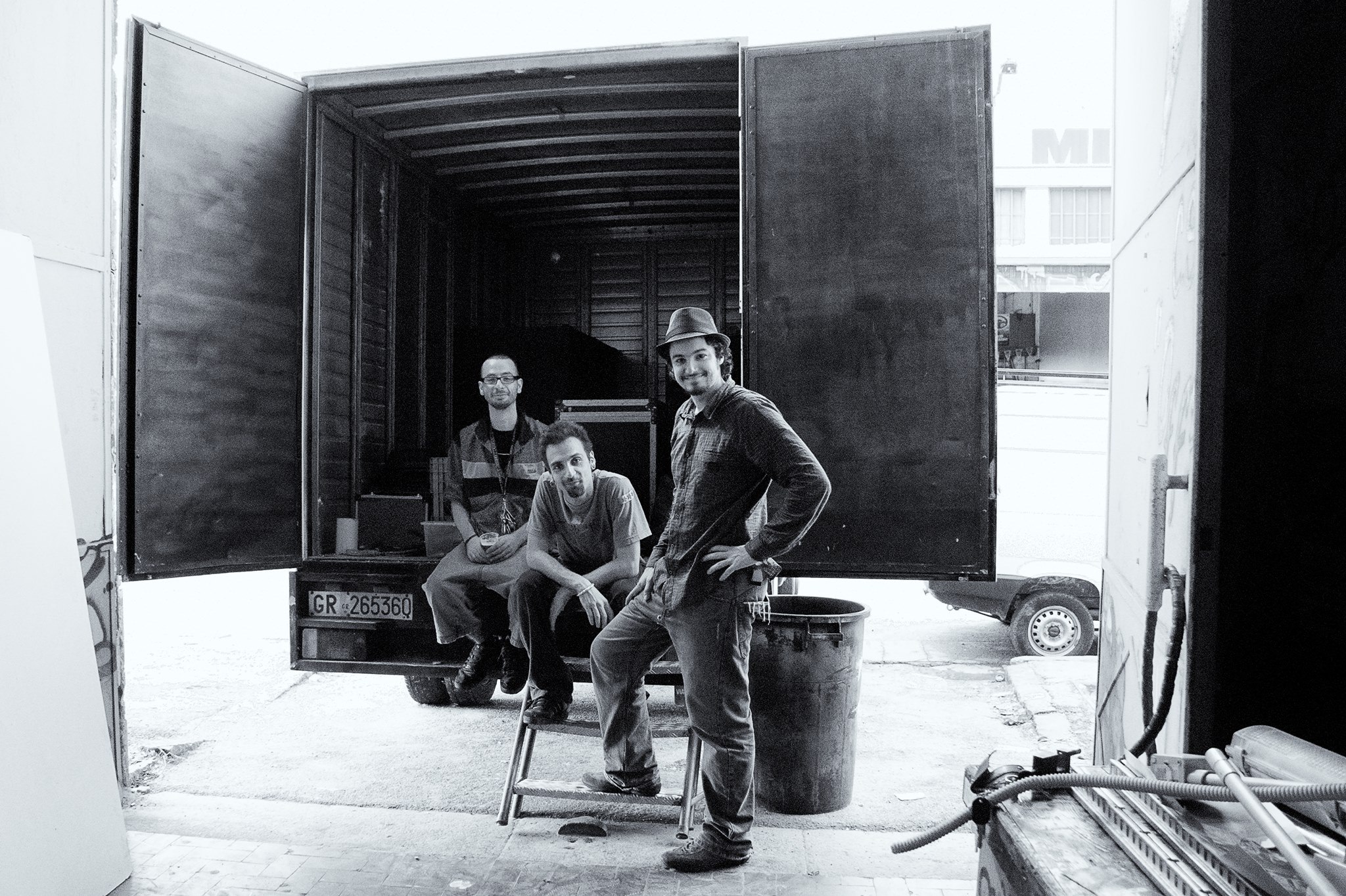
Young and happy Bababoom Hi Fi crew with a brand new truck, 2008
Being a practitioner has deeply influenced my academic trajectory in many ways, the most obvious being my research interests. More importantly, it has also challenged the methodology and the scope of my work, prompting me to elaborate a discourse which could simultaneously resonate both within the scene and the academia – and possibly making a small contribution to both worlds. At the same time, my research has in many ways interrogated my practice, prompting to seek for a deeper understanding of what I’ve been doing – and how, and why – for the last twenty years. The knowledge I have been able to accumulate during my research and the many inspiring people I’ve been lucky to meet have revealed the full potential of something that often remains in shadow – the value of the practitioner’s knowledge and the ways this could be put into work in different contexts.
Twenty years is a short span compared to nearly nine decades of sound system culture, setting the birthdate with Jamaican engineer Hedley Jones’ first self-built amplifier in 1947. Still, I’ve been able to witness how much the European scene has been changing – or, rather, exploding – since we started. The small number of European sparse enthusiasts and pioneers which inspired us to build Bababoom Hi Fi in the first place have made room to – or often, has been embedded into – a well-structured network of festivals, events, recording studios and record shops enveloping the whole continent, sustained by a continuing online exchange. Dub Corners and sound system areas, rather a rarity when we started off, are now an established presence at almost every reggae festival, sometimes even competing with the main stage in terms of the crowd they attract, and festivals solely dedicated to sound systems have become increasingly popular across the continent. Unfortunately, and in spite of the genuine passion that animates the local community, in Italy such an explosion in the number of active sound systems has not been able to generate an equally solid infrastructure for the scene to really thrive. This is probably due to the country’s short-sighted attitude towards music and culture, rising levels of bureaucracy and stagnant economy – let alone Europe’s highest average age (a dramatic 48 according to the 2023 census).
These are some of the thoughts I was ruminating during the seemingly endless journey to drive the Bababoom Hi Fi sound system from Naples, Southern Italy, to Nantes, in the North of France: 1940km one way (22 hours without any stops according to Google Maps) that we covered with two vans fully loaded with equipment as not to breach the weight limit French police is apparently adamant with. The whole operation was only possible thanks to a strong and trusted crew, which included not only the five people who travelled with me, but also those who generously helped with a weeklong of preparations. Another crucial piece in the puzzle was our friend Manu Antibypass, French engineer and producer of the Dub Addict crew who, together with our longstanding friend Fabasstone of High Tone, hosted us at his farm near Lyon for a short sleep after the first 15 hours of driving.
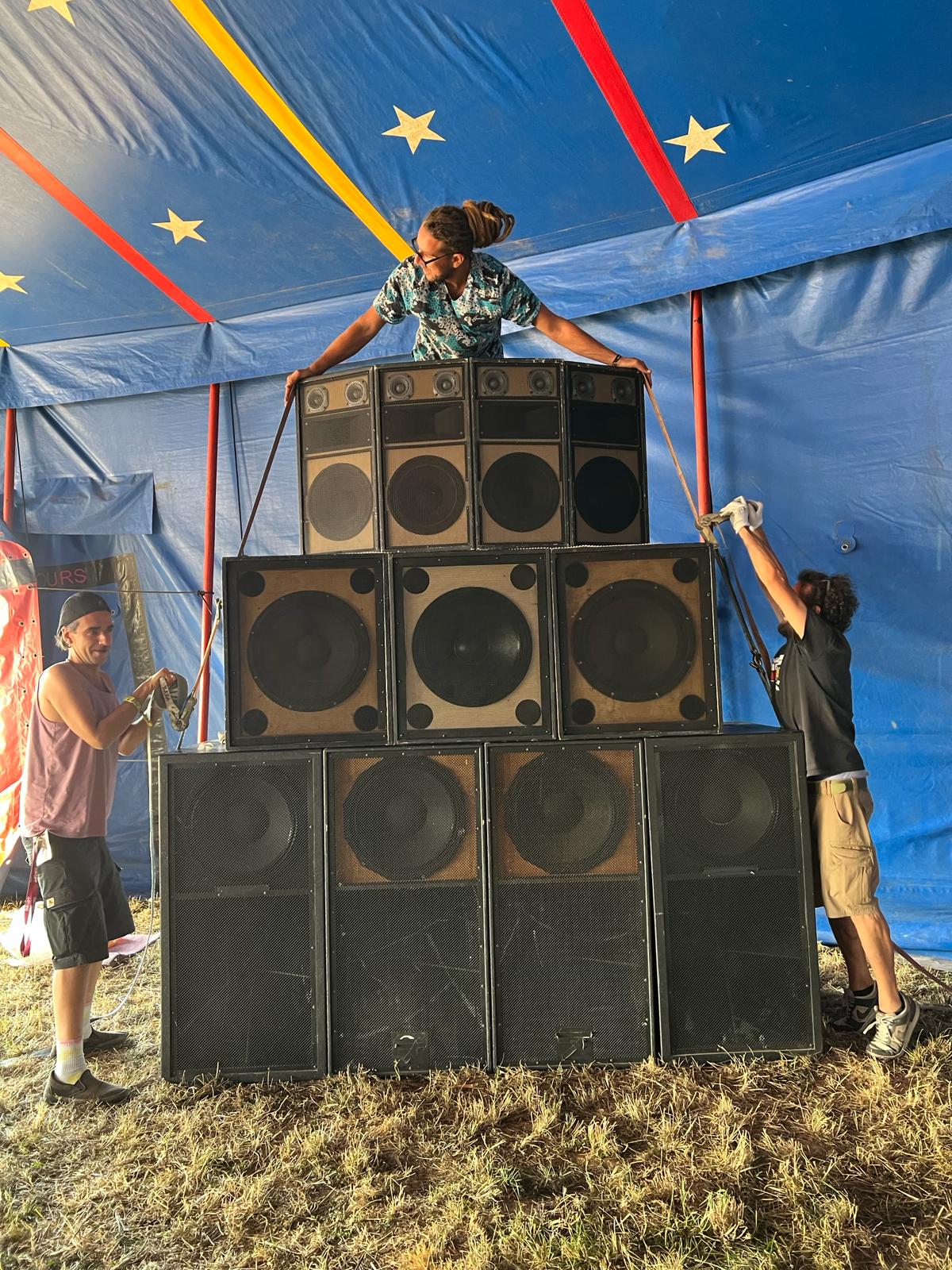
One of two Bababoom Hi Fi stacks
From my experience of Dub Camp 2023 as a performing artist, two elements that really grabbed my attention. The first was the smooth balance of professionalism and warmness which surrounded every aspect of the festival production. From on-line to in-person interaction, every aspect of the organization was spot on – as one would expect from a festival of this size. But this was paralleled with a humble, down-to-earth, and truly passionate attitude emanating from the whole production team, from stage management to volunteers. It was surprising to meet the senior production team on site – smiling, relaxed and welcoming as they were hosting a house party. Several of them were also artists in their own right, who performed or had performed at previous editions. This practitioner’s knowledge clearly makes the difference at Dub Camp, whereas usually the bigger the event, the more anonymized the behind-the-stage experience gets for artists. This was also reflected in the way the sound meeting was organized. Beyond the mere logistics, the choice of the three sounds demonstrated a great insight into the nuances of the scene, including music style, weight, and expertise. (Big up I-Skankers and Jah Roots Hi Fi for a great meeting!).
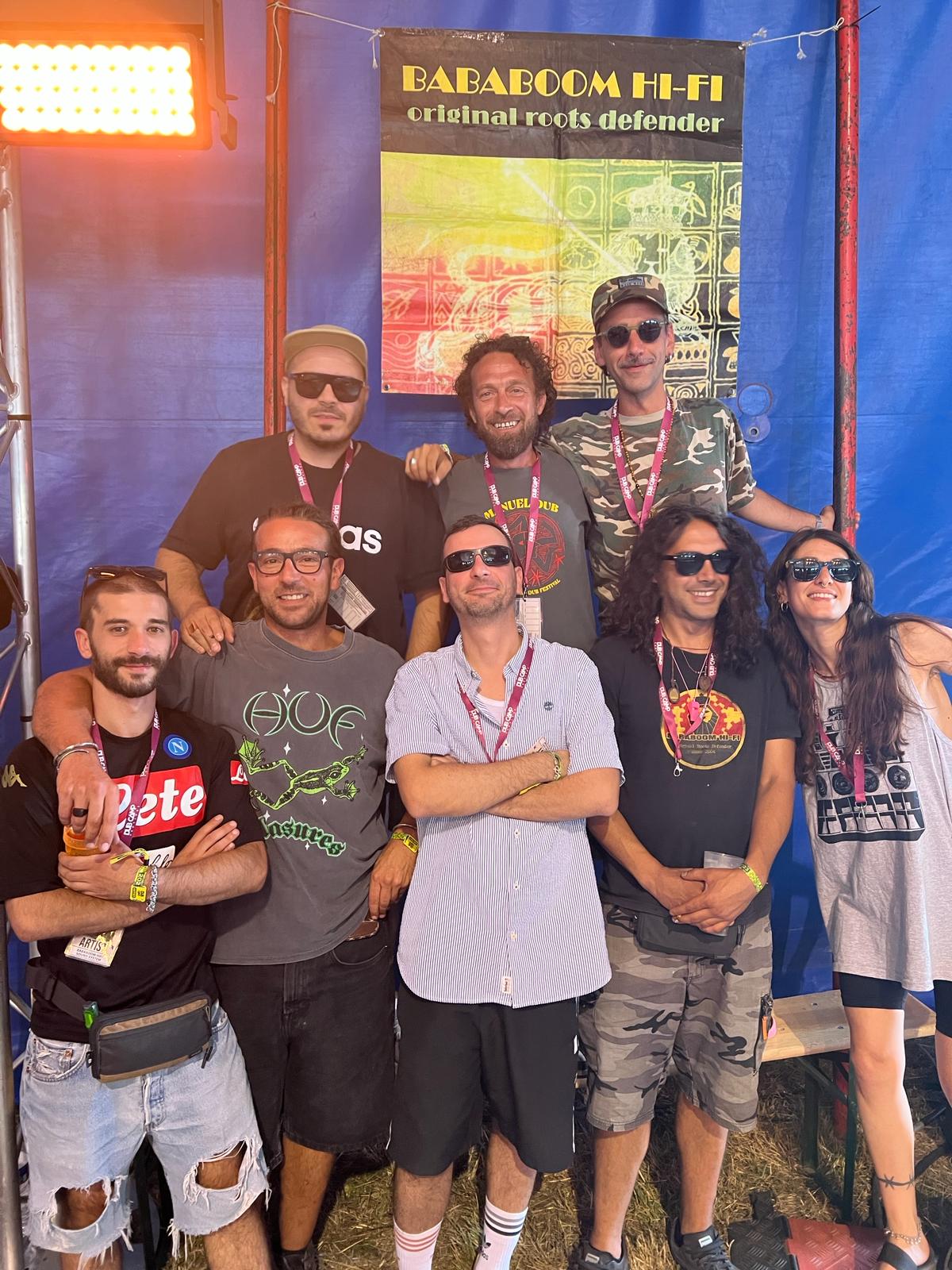
Baba crew at Dub Camp 2023 (top-left to right: Lion Warriah, Samu Wise Sound, Chiliman, Kasper 55 Sound, Marco Mistical Sound, Brian Baba, Dub Harp, MP)
The other point I’d like to emphasize is the audience’s own knowledge, commitment, and passion. A crowd’s attitude, more than its size, is what turns a nice gig into an unforgettable experience for an artist. The crowd at Dub Camp surprised me with the attention they were able to devote to any single performance – us included – as well as with their own expertise. Therefore, my perception in many ways opposed what is somehow a shared understanding of the European (and especially French) scene as heavily oriented towards modern steppers and electronic jump-up music. No matter which style of reggae was played, from JA oldies to early dancehall and rub a dub, each performance was properly met by a crowd of well-receptive, passionate, and truly knowledgeable music lovers, who valued the quality of the music and the delivery more than anything else.
On behalf of Bababoom Hi Fi, I’d like to thank the Dub Camp team for a truly great experience, and to wish them the best for the 2024 edition!
—
[1] Dub Camp Sound Clash #1: Heartical vs Legal Shot (Full video) – 13.7.2023, (On Line) https://www.youtube.com/watch?v=IlJzSrccrMA
—
Maria Emilia Escamilla is a political scientist and anthropologist based in Mexico and France. She is interested in the crossover between politics and arts as a mean to enhance social change and community building. Her last research addresses the role of sonidero dancers in the construction of Mexico City’s identity as a free and diverse city.
Jean-Christophe Sevin is a lecturer in information and communication sciences (Avignon University/Centre Norbert Elias). After investigating the political and cultural reception of raves and techno music in France, he is working on the trans-local dynamics of reggae and sound-system culture.
Brian D’Aquino is Senior Research Assistant in the SST project based at Goldsmiths, University of London. He’s an author, sound system practitioner and music producer based in the Southern side of Europe.
